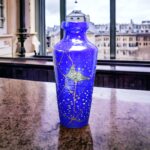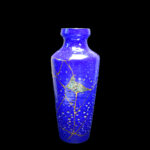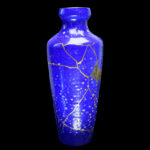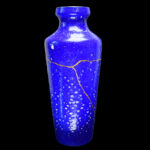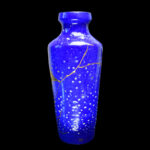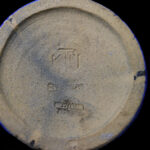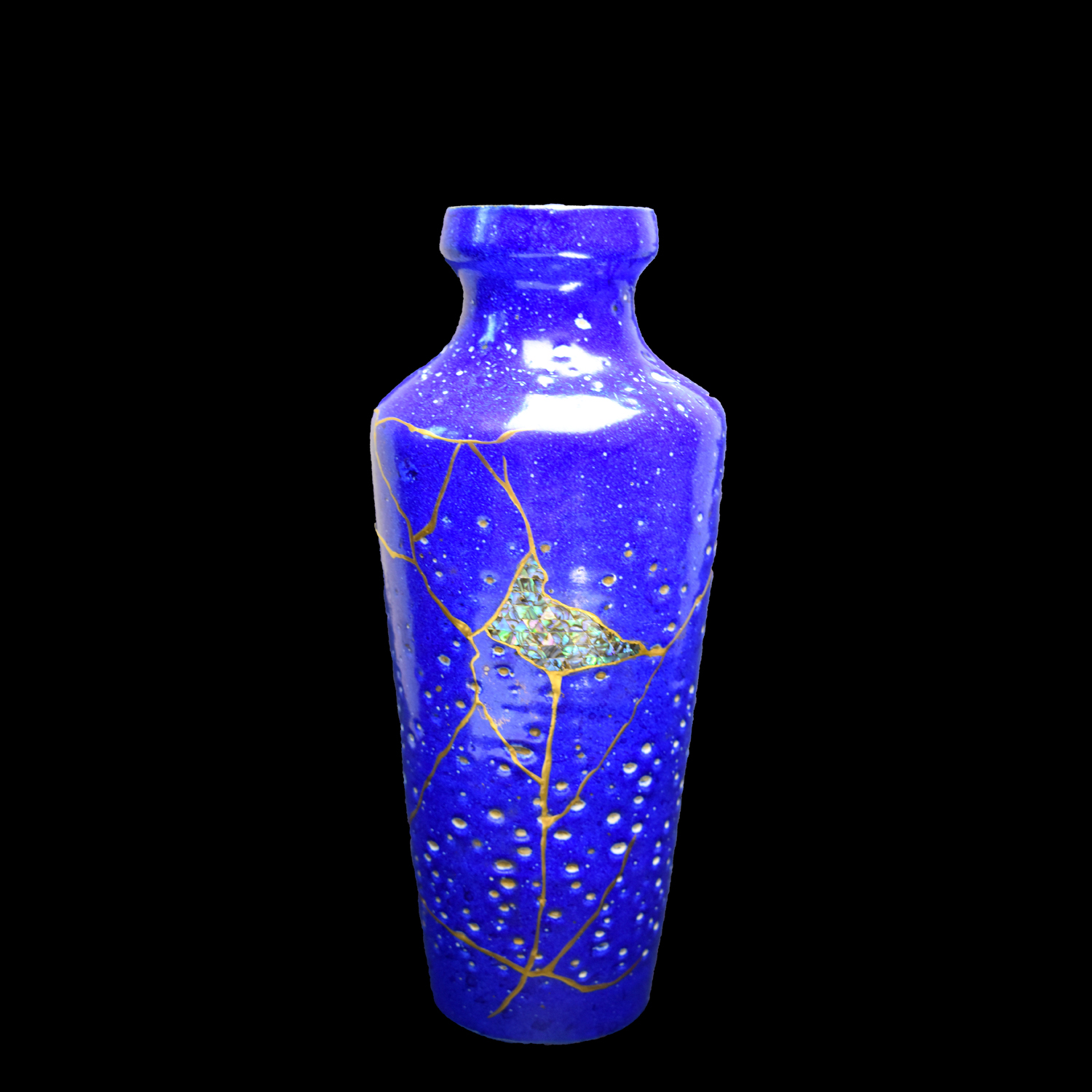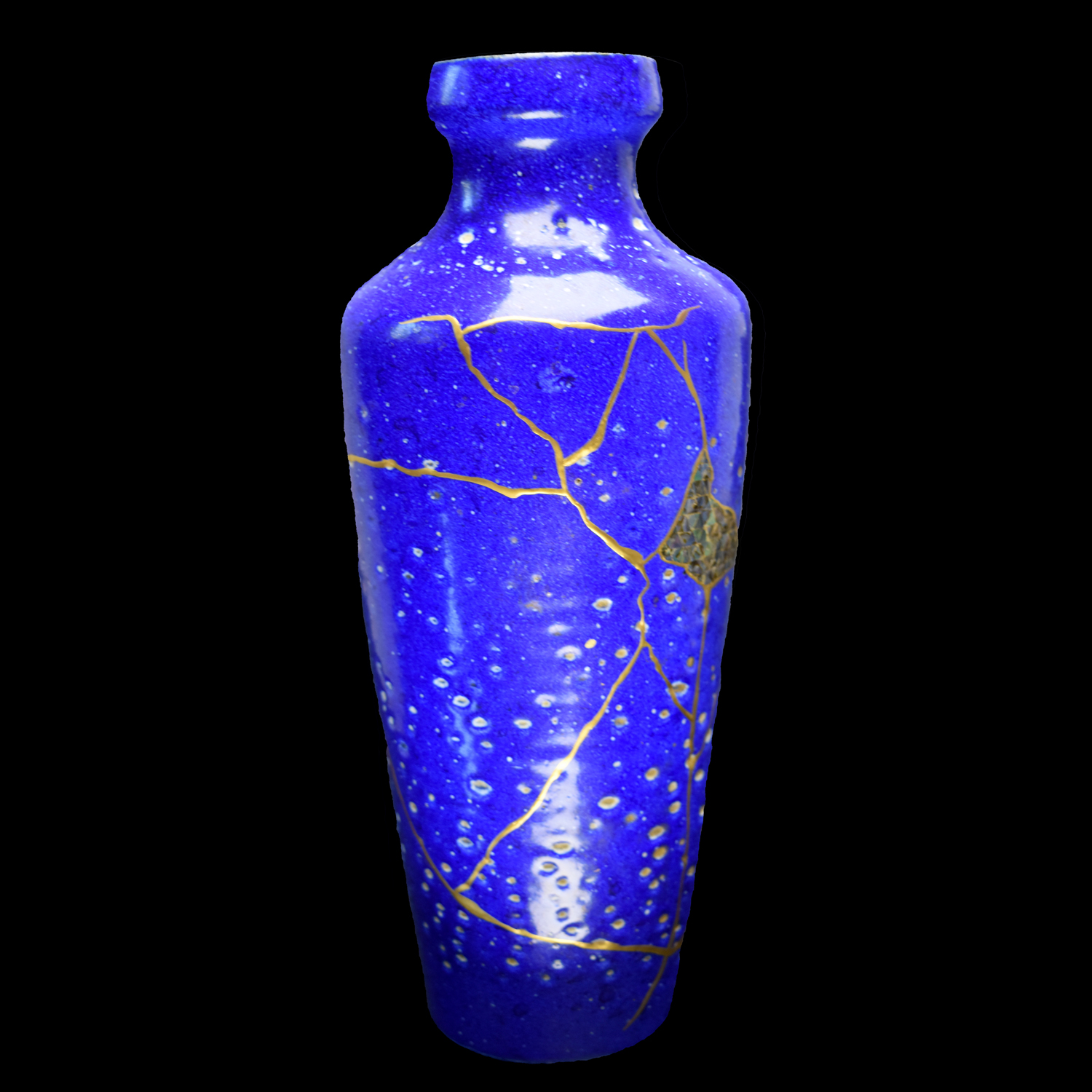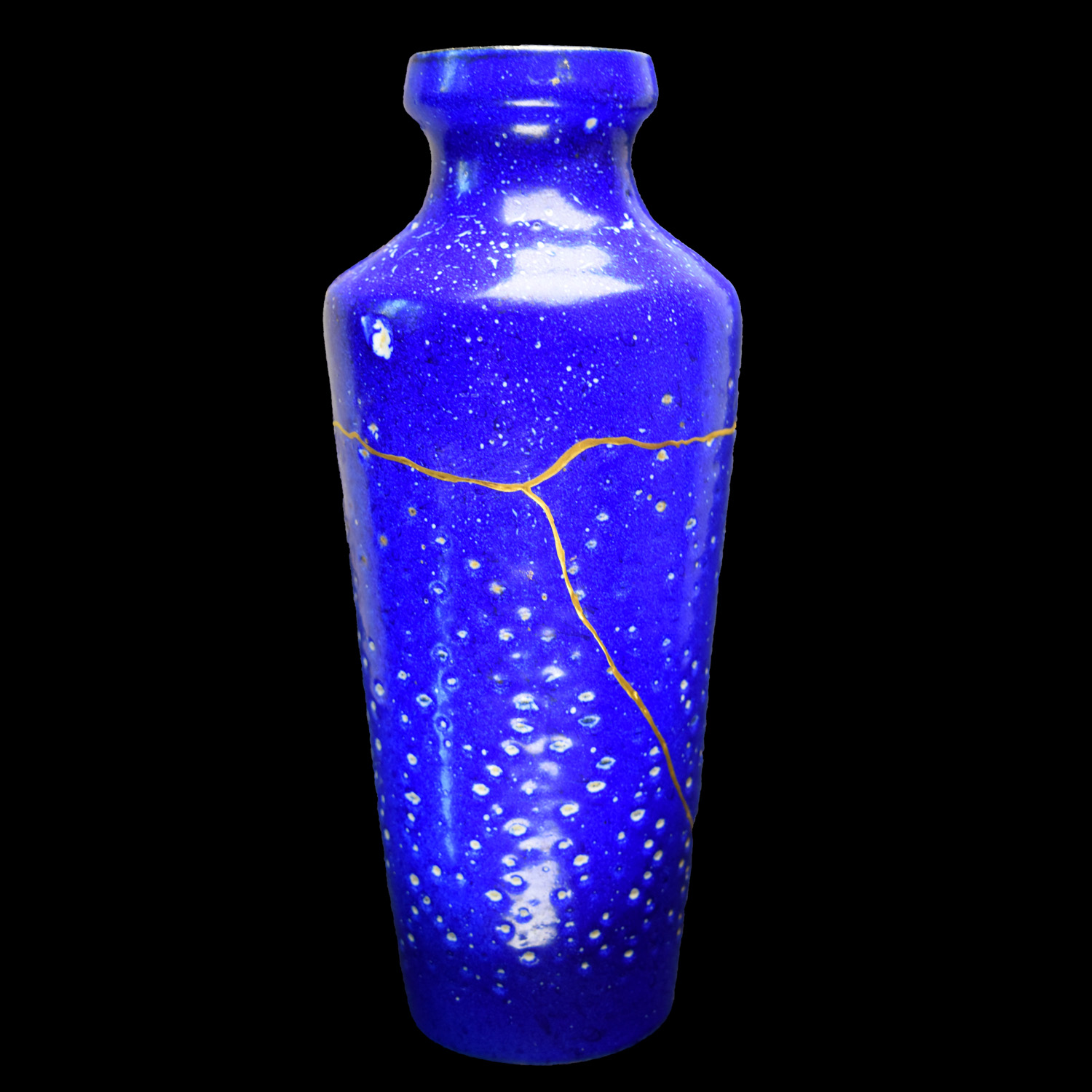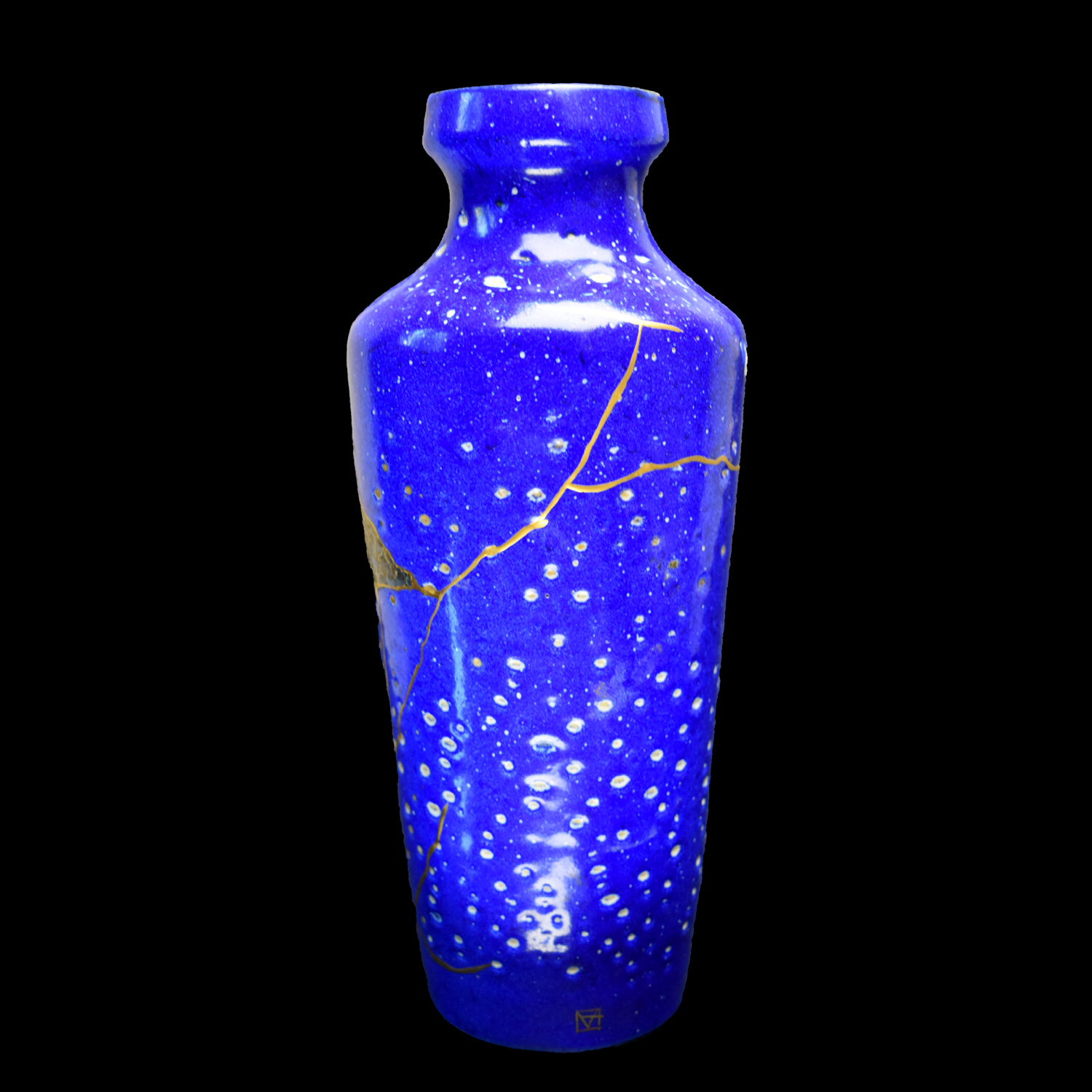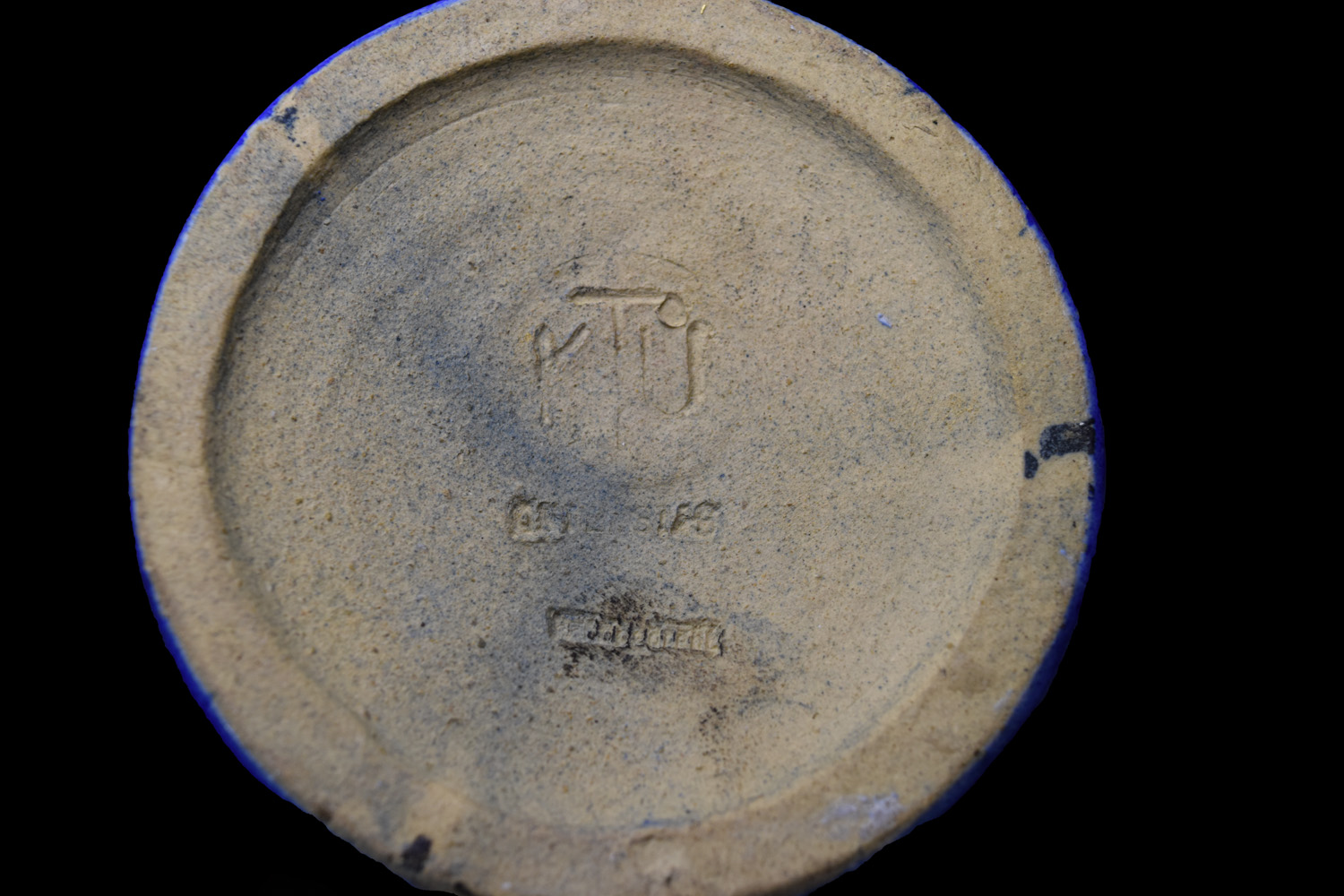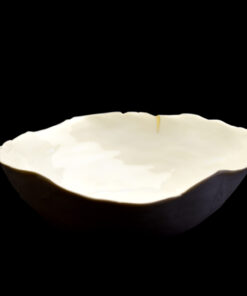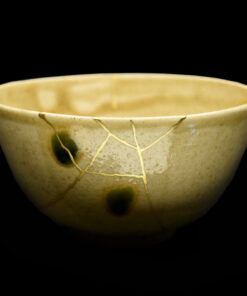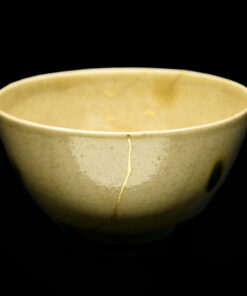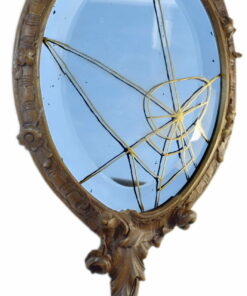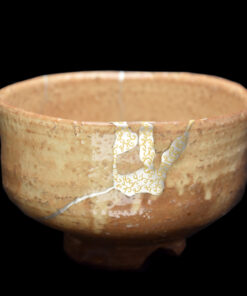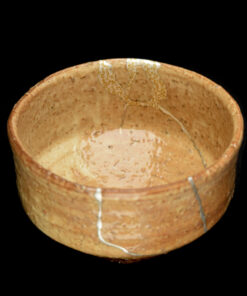Blue vase with mop
1 600 € VAT incl.
Out of stock
For express shipping please contact us before purchase as prices are difficult to calculate automatically on the website.
This blue porcelain vase comes from the German studio KTU Unterstab and is an iconic piece from the 60s.
For this accidentally broken piece, I decided to use a particularly difficult and delicate technique in addition to 24-carat gold kintsugi: burgautage.
The name comes from burgau, the common name for many mother-of-pearl-producing shellfish. This is the mystery ingredient of this restoration: thin strips of mother-of-pearl, inlaid in natural black lacquer.
This traditional Japanese technique, known as Raden, demands meticulous, patient work: it requires a great deal of sanding and polishing, to achieve a perfectly smooth finish to the touch and a mirror-polished shine. With an added difficulty in the case of this piece: the surface is curved rather than flat, making inlaying all the more complex.
The result? A 28 cm-high piece that’s absolutely unique. The alliance of an ancestral technique and a vase with a contemporary, elegant and original look.
Extra info:
The mother-of-pearl used here is particularly precious: it comes from a very specific shellfish, the Haliotis, famous for its many reflections ranging from blue to fuchsia pink.
| Food Safe | Yes |
|---|---|
| Certificate of Authenticity | Provided |
| Color | Blue |
| Materials | 24 carats Gold, Porcelain, Urushi (Japanese lacquer) |
Related products
Traditional Japanese Kintsugi
Traditional Japanese Kintsugi
Traditional Japanese Kintsugi
Traditional Japanese Kintsugi

